
Poland facts and history
in brief
Warsaw
Excerpted from Wikipedia, the free encyclopedia.
Warsaw (Polish: Warszawa, in full The Capital
City of Warsaw, Polish: Miasto Stoleczne Warszawa) is
the capital of Poland and its largest city.
It is located on the Vistula river roughly 350 km from
both the Baltic Sea coast and the Carpathian Mountains.
Its population as of 2004 was estimated at 1,676,600,
with an urban agglomeration of approximately 2,400,000.
Area of this city is 516,9 sq. km, with an urban aglomeration
of 1226,6 sq.km.
The city, also the capital of Masovian Voivodship, is
home to many industries (manufacturing, steel, electrical
engineering, automotive industry), comprises 66 higher
learning institutions.
Warsaw
Motto: Contemnit procellas (It defies the storms)
and Semper invicta (Always invincible)
Voivodship: Masovian
Municipal government: Rada miasta st. Warszawy
Mayor: Lech Kaczynski (2005)
Area: 516,9 km˛.
Population:
- city 1,676.600
- urban 2,400,000
- density 3258/km˛
Founded: 13th century
Area code: +48 22
Car plates: WA to WZ
Twin towns Astana, Berlin, Düsseldorf, Hague, Hamamatsu,
Hanoi, Kyiv, Moscow, Paris, Riga, Seoul, St.Petersburg,
Taipei, Tel Aviv, Toronto, Vienna, Vilnius.
Municipal Website: (http://www.um.warszawa.pl/)
Location
Warsaw is located on both sides of the Vistula river,
approximately 350 kilometres from both the Carpathian
mountains and the Baltic Sea.
It is located in the heartland of the Masovian Plain.
Average altitude is 100 m above sea level, although
there are some hills (mostly artificial) located within
the confines of the city.
Climate
Warsaw's climate is continental humid.
The average temperature is 8 degrees Celsius (-3 °C
in January and 19 °C in July).
Yearly rainfall averages 680 mm, the most rainy month
being July.
History
Warsaw was a small fishing village in the 13th century.
In time, it became one of the seats of the Dukes of
Masovia.
Upon the extinction of the ducal line, the duchy was
incorporated into the Kingdom of Poland in 1526.
In 1572, Warsaw gave its name to the Warsaw Confederacy,
an agreement by the Polish Gentry to tolerate different
religious faiths in the Kingdom of Poland.
Due to its central location between the Polish-Lithuanian
Commonwealth's capitals of Vilnius and Kracow, Warsaw
became the capital of Poland in 1596, when King Sigismund
III (Vasa) moved the capital from Krakow.
Warsaw remained the capital of Polish-Lithuanian Commonwealth
until 1795, when it was annexed by the Kingdom of Prussia,
to become the capital of the Province New East Prussia.
Liberated by Napoleon's army in 1807, it was made the
capital of the newly created Duchy of Warsaw.
Following the decisions of the Congress of Vienna 1815,
Warsaw became the center of the Polish Kingdom, a constitutional
monarchy under a personal union with Imperial Russia.
Following repeated violations of the Polish constitution
by the Russians, the 1830 November Uprising broke out.
However, the Polish-Russian war of 1831 ended in the
defeat of the uprising and the curtailment of the autonomy
of the Kingdom.
On February 27, 1861 a crowd in Warsaw protesting Russian
rule over Poland was fired upon by Russian troops killing
five protesters.
Warsaw become the capital of newly independent Poland
again in 1918.
Warsaw flourished in the late nineteenth century under
Mayor Sokrates Starynkiewicz (1875 - 1892), a Russian-born
General appointed by Tsar Alexander III.
Under Starynkiewicz, Warsaw saw its first water and
sewerage system designed and built (by English engineer
William Lindley and his son, William Heerlein Lindley),
as well as expansion or modernization of trams, street
lighting and gas works.
In the course of the Polish-Bolshevik War of 1920 there
was a huge Battle of Warsaw fought on the eastern outskirts
of the city in which the capital of Poland was defended
and the Red Army defeated.
Warsaw is notable among Europe's capital cities not
for its size, its age, or its beauty but for its indestructibility.
It is a phoenix that has risen repeatedly from the ashes.
Having suffered dreadful damage during the Swedish and
Prussian wars of 1655-1656, it was again assaulted in
1794, when the Russian army massacred the population
of the right-bank suburb of Praga.
Its most remarkable act of survival, though, was its
rebirth following almost complete destruction during
the Second World War.
The Second World War began when Germany invaded western
Poland on 1st September 1939.
On 17th September, eastern Poland was invaded by the
USSR.
Poland capitulated after 6 weeks of fighting.
Western Poland was incorporated into the German Reich,
eastern Poland into the USSR while central Poland, including
Warsaw, became part of a German-occupied military zone,
the General Government.
In the course of the September Campaign Warsaw was severely
bombed and in the course of the Siege of Warsaw approximately
10 to 15% of all the buildings were destroyed.
Warsaw became an occupied city under the control of
the Nazi SS.
All higher education institutions were immediately closed
and Warsaw's entire Jewish population - several hundred
thousand, some 40% of the city-herded into the Warsaw
Ghetto.
When the order came to liquidate the Ghetto as part
of Hitler's "final solution", Jewish fighters launched
the Warsaw Ghetto Uprising.
Despite being heavily outgunned and outnumbered, the
Ghetto held out for almost a month.
When it ended, the survivors were massacred.
During 1943 and 1944 the tide of the war changed as
the USSR, which had been at war with Germany since 1941,
inflicted several severe defeats on the German army.
By July 1944 the Soviets were deep into Polish territory
and pursuing the Germans towards Warsaw.
Knowing that Stalin was hostile to the idea of an independent
Poland, the Polish government-in-exile (based in London)
gave orders to the underground Home Army (AK) to try
to seize control of Warsaw from the Nazis just before
the Soviets arrive.
Thus on August 1, 1944, as the Soviet army was moving
towards the city very fast, the Home Army and the general
population started the Warsaw Uprising.
Despite Stalin's hostility towards Poland, they had
expected that Soviet troops would assist them against
their common German enemy.
Polish nationalists contend that the Soviet army sat
and watched as the Germans ruthlessly suppressed the
uprising.
Recent studies of both Nazi and Soviet records have
convinced many historians that it is unlikely the Red
Army could have reached the city.
Although the insurgency, planned to last 48 hours, held
out for 63 days, eventually the Home Army fighters were
forced to capitulate.
They were transported to POW camps in Germany while
the entire civilian population was expelled.
Hitler then ordered the entire city to be razed to the
ground.
When the Russians entered the city, 85% of the buildings
had been destroyed, including the historic Old Town
and the Royal Castle.
Surviving Home Army fighters were rounded up by the
NKVD and either killed or deported to Siberia.
After the war, Boleslaw Bierut's puppet regime, set
up by Stalin, made Warsaw the capital of communist People's
Republic of Poland, and the city was resettled and rebuilt.
A lot of plattenbaus (Plattenbau is the German word
for a building whose structure is constructed of large,
prefabricated concrete slabs, often found in central
and eastern Europe), can be found in Warsaw.
Few of the inhabitants of pre-war Poland returned: hundreds
of thousands were dead, thousands more in exile from
the new regime.
Nonetheless, the city resumed its role as the capital
of Poland and the country's center of political and
economic life.
Many of the historic streets, buildings, and churches
were restored to their original form.
In 1980, the historic Old Town of Warsaw was inscribed
onto UNESCO's World Heritage list.
In 1995 the Warsaw Metro finally opened and with the
entry of Poland into the European Union in 2004 Warsaw
is currently experiencing the biggest economic boom
in its history.
Some of the famous people born, living or working
in Warsaw:
Fryderyk Chopin, (1810-1849), one of the greatest Polish
composers.
Maria Sklodowska-Curie, (1867-1934), pioneer researcher
into radioactivity.
Wladyslaw Reymont (1867-1925), writer, Nobel Prize winner.
Municipal Government
Warsaw is a municipal powiat (county) and is further
divided into 18 distinct entities, called dzielnica,
with their own administrative bodies.
Each of the dzielnica is divided into neighbourhoods
which are not officially recognized by the city but
known by most Varsovians.
The best known neighbourhoods are Stare Miasto and Nowe
Miasto in the borough of Sródmiescie.
Warsaw districts (since 2002): Bemowo, Bialoleka,
Bielany, Mokotów, Ochota, Praga Poludnie, Praga Pólnoc,
Rembertów, Sródmiescie, Targówek, Ursus, Ursynów, Wawer,
Wesola (incorporated into the city of Warsaw in 2001,
before a separate city), Wilanów, Wola, Wlochy, Zoliborz.
Following the Warsaw Act (Ustawa warszawska) of October
27, 2002 President of Warsaw carries over most of the
executive duties in the city.
His prerogative is, among others, governing the city-owned
property that still constitutes a major part of the
city.
Municipal government
The Warsaw act abolished all the former counties and
formed one city powiat with one municipal government.
Legislative power in Warsaw is vested in a unicameral
City Council (Rada Miasta), which contains 60 members.
Council members are elected directly every four years.
Like most legislative bodies, the City Council divides
itself into committees which have oversight of various
functions of the city government.
Bills passed by a simple majority are sent to the mayor,
who may sign it into law.
If the mayor vetoes the bill, the Council has 30 days
to override the veto by a two-thirds majority vote.
Each of the 18 separate city districts has its own council
(Rada dzielnicy).
Their duties are focused on aiding the President and
the City Council, as well as supervising various municipal
companies, city-owned property and schools.
The head of each of the District Councils is named the
Mayor (Burmistrz) and is elected by the local council
from the candidates proposed by the President of Warsaw.
As the capital of Poland, Warsaw is the political centre
of the country.
All state agencies are located there, including the
Polish Parliament, Presidential Office and the Higest
Court.
In the Polish parliament both the city and the area
are represented by 31 MPs (out of 460 altogether).
Additional 2 politicians were recently elected MEPs.
Mass Transit
The public transportation system in Warsaw consists
of three branches (buses, tramways and metro) united
in the ZTM (Zarzad Transportu Miejskiego or the City
Transportation Office).
Additional lines are operated by private companies and
the state-owned railways.
Bus service covers the entire city, with 176 routes
totalling 2,603 kilometres in length, and 1,659 vehicles.
The central bus stop is located next to Warszawa Centralna
railway station and Centrum Metro station.
Between midnight and 5 am the city is served by 14 night
lines.
The first tramway line in Warsaw was opened on December
11, 1866.
On March 26, 1908, all the lines, previously horse-powered,
were electrified. Currently the Tramwaje Warszawskie
company runs 863 cars on almost 470 kilometres of track.
29 lines run across the city with additional lines opened
on special occasions (such as public holidays or All-Saints
Day).
In 1946 trolleybuses services were established, which
were greatly expended in the following years.
The first railway line reached Warsaw in 1848 (Warsaw-Vienna
line). Nowadays Warsaw is one of the main railway nodes
and exchange points in Poland. Cheap and fairly efficient,
PKP (Polskie Koleje Panstwowe or Polish State-owned
Railways) are one of the principal means of transport
in Poland. The main train station is Warszawa Centralna.
Both domestic and international connections run from
there to almost every city in Poland and Europe. There
are also 5 additional major train stations and a number
of smaller stations for suburban lines. The railway
crosses the city through a tunnel (Tunel Srednicowy).
It is approximately 2.2 km long and runs directly under
the city center. It is a part of an east-west line connecting
the Warszawa Zachodnia, Warszawa Centralna and Warszawa
Wschodnia train stations through the tunnel and a railway
bridge over the Vistula river. There are plans of converting
this line into a metro.
Culture
Warsaw is home to over 30 major theatres that are spread
throughout the city, including the National Theatre
(founded in 1765) and the Grand Theatre in Warsaw ([2])
(established 1778). Warsaw also attracts many young
and off-stream directors and performers who add to the
city's theatre culture.
There are many museums and art galleries in Warsaw,
most notable are the Muzeum Narodowe, Zacheta Art Museum,
Center for Contemporary Art, Museum of the Polish Army.
The biggest of them, the National Museum has numerous
divisions located in many parts of Warsaw, most notably
in the Royal Castle and the Wilanow Palace.
Warsaw as the capital of Poland it has also been featured
in countless films, both Polish and foreign. Films such
as Kanal and Korczak by Wajda, Eroica by Munk, Mis by
Bareja or The Pianist by Polanski used Warsaw either
as the background - or as the main protagonist.
Education
Warsaw is one of the most important education centres
of Poland. It is home to four major universities and
over 62 smaller schools of higher education.
Economy
Business and commerce Warsaw, and especially its downtown
area of Sródmiescie is not only home to many national
institutions and government agenda, but also is housing
a huge number of both domestic and international companies.
Warsaw produces more than 4.1% of Polish income.
For years the Warsaw Stock Exchange was situated in
the building previously used as the headquarters of
Polish communist party, PZPR.
In the years following 1989, in the course of a peaceful
transformation of both political and economical system
in Poland, most of these went bankrupt. Nowadays, the
Lucchini-Warszawa Steel Mill (formerly Huta Warszawa)
is the only major factory remaining.
Tourist attractions in Warsaw.
Although Warsaw is a relatively new city, it has a lot
of tourist attractions.
Apart from the Old Town quarter, carefully reconstructed
after World War II, each of the borrough has something
to offer.
Among the most notable landmarks of the Old Town are
the Royal Castle, Sigismundus' Column and the Barbican.
Further south is the so-called Royal Road, with lots
of notable classicist palaces, the Presidential Palace
and the Warsaw University campus. Also the popular Nowy
Swiat Street is worth mentioning. The oldest Warsaw's
public park, the Ogród Saski, is located within 10 minutes
distance from the old town.
The borough of Zoliborz is famous for its architecture
from the 1920s and 1930s.
Between Zoliborz and the Vistula the Warsaw Citadel
is located, which is one of the priceless monuments
of 19th century military architecture in Poland. Also
the former royal residencec of king Jan III Sobieski
in Wilanów and Belweder are notable for their baroque
architecture and beautiful parks. However, Warsaw is
perhaps the most famous for several buildings from modern
history. Apart from the Palace of Culture and Science,
a Soc-realist skyscrapper located exactly in the city
centre, the Stadion Dziesieciolecia which is the biggest
market in Europe also attracts many tourists. For those
who seek dramatic contrasts the borough of Central Praga
is often the best choice. Called by the Varsovians the
Bermuda Triangle for high crime rate, it is a place
where almost completely demolished houses stand right
next to modern apartment buildings and shopping malls.
External links

This page was retrieved and condensed from
(http://en.wikipedia.org/wiki/Warsaw) in July, 2005
All text is available under the terms of the GNU Free
Documentation License.

Hui Chin and I visited
Warsaw during our 2005 trip in Europe.
We did enjoy our stay in Warsaw.

Some of my photos of Warsaw.
You can click on
these photos for an enlargement
 |
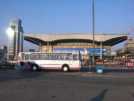 |
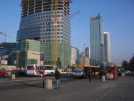 |
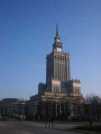 |
| Warsaw |
Warsaw |
Warsaw |
Warsaw |
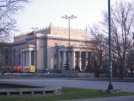 |
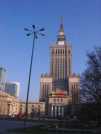 |
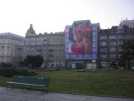 |
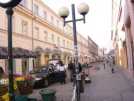 |
| Warsaw |
Warsaw |
Warsaw |
Warsaw |
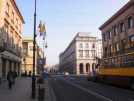 |
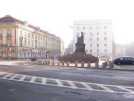 |
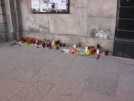 |
 |
| Warsaw |
Warsaw |
Warsaw |
Warsaw |
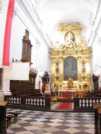 |
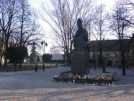 |
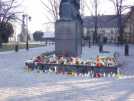 |
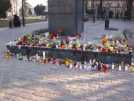 |
| Warsaw |
Warsaw |
Warsaw |
Warsaw |
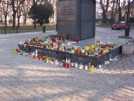 |
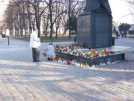 |
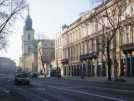 |
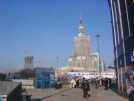 |
| Warsaw |
Warsaw |
Warsaw |
Warsaw |
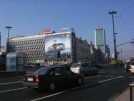 |
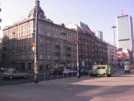 |
| Warsaw |
Warsaw |
Warsaw buses
 |
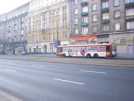 |
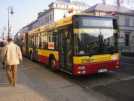 |
| Warsaw buses |
Warsaw buses |
Warsaw buses |
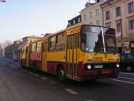 |
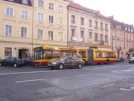 |
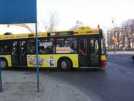 |
| Warsaw buses |
Warsaw buses |
Warsaw buses |
Warsaw trams
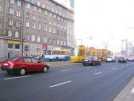 |
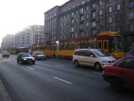 |
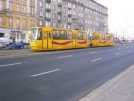 |
| Warsaw trams |
Warsaw trams |
Warsaw trams |
Warsaw trains
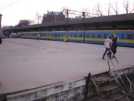 |
| Warsaw trains |

Site
Index
Back to Top
Photos Index
Thanks for coming, I hope you
have enjoyed it, will recommend
it to your friends, and will come
back later to see my site developing
and expanding.
I'm trying to make my pages
enjoyable and trouble free for everyone,
please let me know of any mistakes
or trouble with links, so I can
fix any problem as soon as possible.
These pages are best viewed with monitor
resolution set at 640x480 and kept simple
on purpose so everyone can enjoy them
across all media and platforms.
Thank you.
You can e-mail me at
Webmaster

|